Best price comparison websites and apps to compare prices online
What is price comparison?
Price comparison websites in the UK are most commonly thought of for comparing prices of insurance products and travel options. Price comparison isn’t just for money products and holidays though!Customers are always looking for the best deals, and because of that, price comparison websites for shopping are popular worldwide.Price comparison sites gather information from retailers, and displays the prices of products, from different sellers and different brands. These websites allow customers to find the best product for them, at the best price possible, on the same website.
Let’s say our customer is looking for a new washing machine. Rather than visiting Currys, John Lewis, AO.com and Amazon and probably a few others, they visit the price comparison website. (Some customers might start on their favourite retailer’s website, to get that luxurious user experience. They might narrow down their selection on the John Lewis website, if that’s their preferred interface, for example) They might then visit the comparison website to check if they can get a better deal elsewhere.
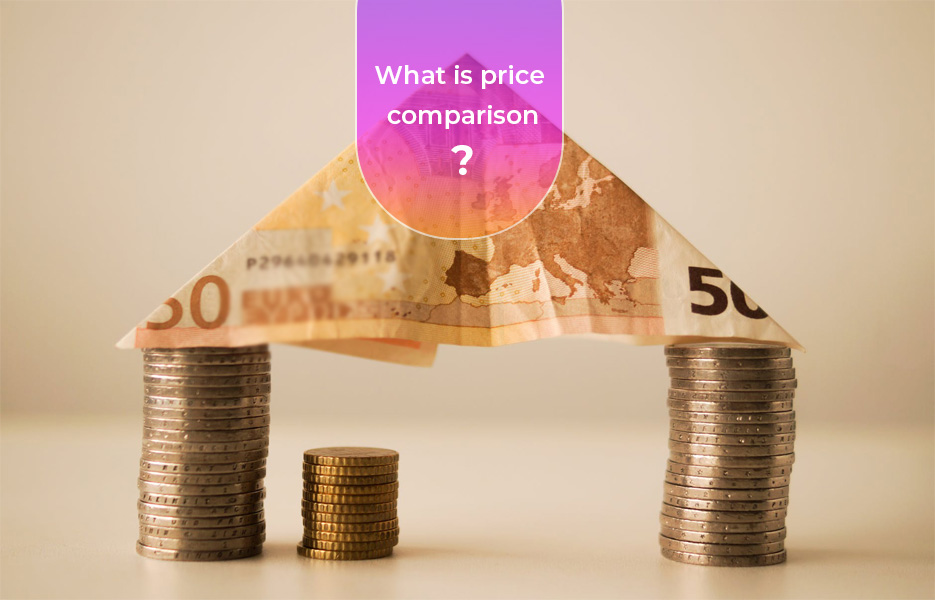
On the price comparison website, they see the best deals, filter product options, sort by price and so on. When they find the best price for them, they can click through to the retailer they’ve chosen. This allows customers to make the purchase quickly, without searching for special voucher codes, considering shipping costs etc.
Many of these websites have apps to accompany them, allowing users to search on-the-go. Many apps can also scan barcodes, so in-store customers don’t even have to search Google for the product!They simply zap the barcode with their phone’s camera, and see the search results almost instantly. Mobile eCommerce sales worldwide are expected to exceed half of all eCommerce sales by 2021. Price comparison apps make sense, not just for the consumer, but for retailers too – both on and offline.
How do price comparison websites work?
Let’s get the technical bit out of the way. There are three ways that price comparison websites can work:
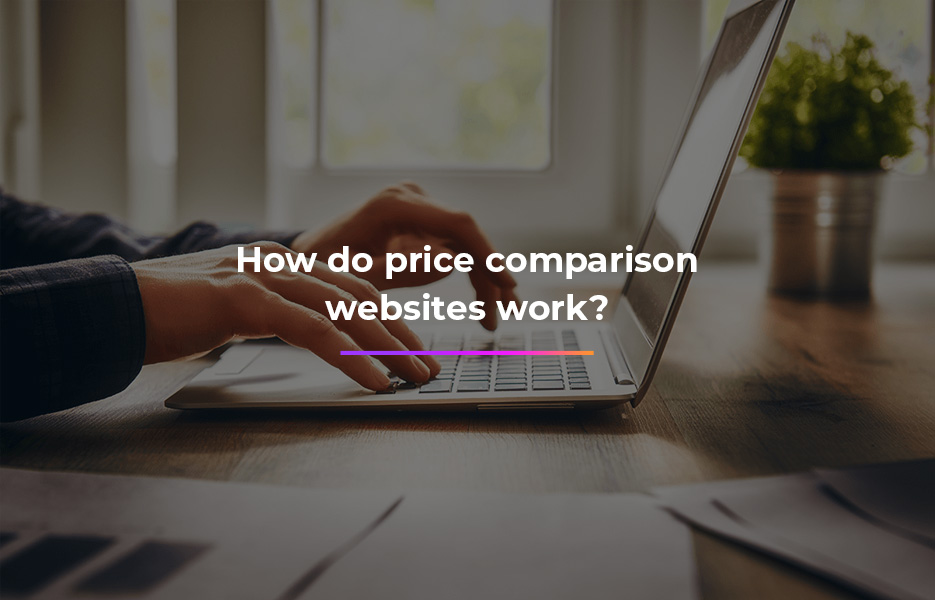
1 Collecting data directly from sellers
A price comparison website might set up an arrangement where they can access pricing and product data directly from retailers. Normally this would be set up from a web feed, and doesn’t need any additional setup by the merchant or the retailer. However, it’s not a perfect solution. There is a lot of manual work required, and this method may not be able to make real-time updates. This means there’s a chance that regularly throughout the day, the seller’s price might be inaccurate, leading to customer frustration. For the comparison website, trying to add information from hundreds, or thousands of sellers simply isn’t realistic. Information might be provided in multiple formats, and require the seller or the website to convert to different formats. All in all, this isn’t a viable long-term solution for a truly successful, highly used price comparison website.
2 Crawling
Crawling bots can gather pricing and product information. Crawlers mean the information collected is accurate according to what is live on the seller’s website. In this way, itcan be more useful – and there’s no dependency on the seller providing the information required. However, using crawlers isn’t a realistic answer for long-term success of a price comparison site.They can be expensive, and difficult to maintain current data, as crawling takes some time. Not only that, some websites have anti-crawling protocols.
3 API integration
APIs can be a convenient solution for some websites, but it can be pretty tricky to manage from different shopping platforms. Sellers might be using Magento, WooCommerce, Bigcommerce, OpenCart, Shopify or one of many other website solutions, presentingmany variables.API integrations can allow price comparison websites to connect with each of these websites easily, with less technical knowledge required. They can gather all the product information that is required, with less development time. This is a preferred solution, as it allows for more sellers to connect to the price comparison website.
Price comparison websites might use one, or a selection of these methods to collect data.
Why do customers use price comparison websites?
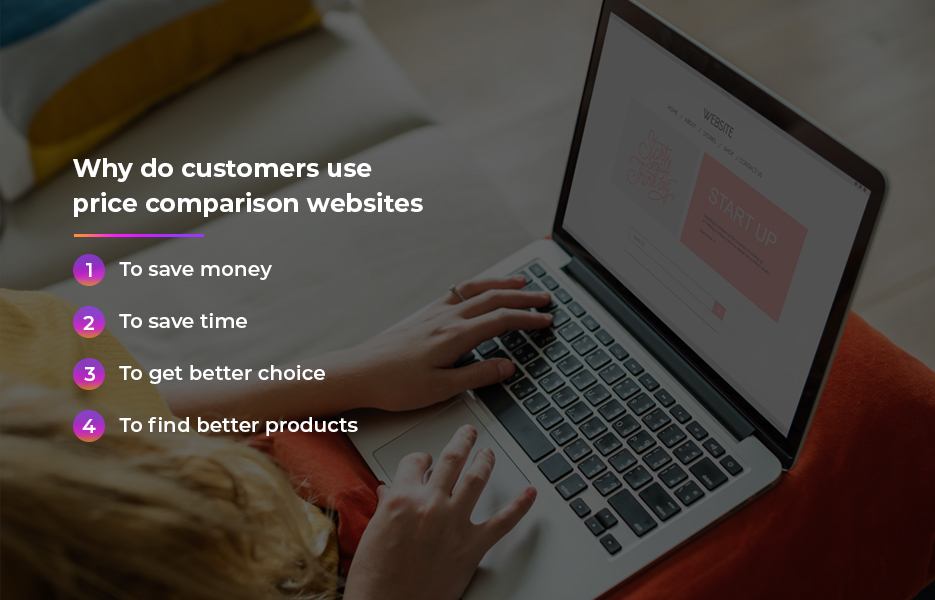
You might think this goes without saying – and we’ll get to that first! But there are four main reasons that customers use price comparison websites:
1. To save money. With an increasing reliance on Amazon (especially Prime customers) and eBay, price comparison websites can help customers to better offers. Pricing information may also include coupons, cashback or special deals, with filters such as free shipping.
2. To save time. Rather than having to check loads of different websites to find the best price, customers can search just once. They know they’re likely to find the best price on the comparison site, and so they can go straight there.
3. To get better choice. When a customer has a bad experience with a retailer, they might prefer not to use that seller again. Price comparison websites can help customers find a more suitable option for them.
4. To find better products. In addition to price information, many comparison websites also offer other relevant products and deals.
Buyer beware!
Although price comparison websites can be useful for customers, there are several reasons customers should be cautious. Copycat, or counterfeiting has been a problem for decades, but internet shoppers should be even more careful. Not only that, comparison sites might not give the whole picture. It’s wise to do more research than just using one comparison site when making a major purchase.
Counterfeit products
Not all price comparison websites check the practices of the websites they list products for. Not only that, it’s near impossible for price comparison websites to check the authenticity of all products from all stores. That means unfortunately, without due diligence, customers end up paying much more than they should, or receive substandard goods. Customers should use their common sense, and check review websites such as Trustpilot before they buy. Check out our section below to find tips about checking website security.
Limited products
Some comparison websites only work with a small number of sellers, meaning they only compare small numbers of products. Although customers might use a comparison website, they might use more than one to find the right deal for them. This could work in favour of sellers, but consider addingyour products to more than one comparison site.
Added costs
Where sellers charge for postage separately, this may push the total cost higher than a competitor. This might annoy customers, as some comparison websites may not show your postage charge. That means if you’re using a cost-per-click comparison site, you may end up paying, but ending up with abandoned carts. Be aware, and change your strategy if you’re paying but not seeing good return on your investment.
Steps to check if a website is trust worthy

Most people today know how to spot an unsafe website, but we still hear plenty of stories of online fraud. Because of that, we’re including a few steps here to help you avoid getting caught!
- Google the name of the website. If the website gets plenty of traffic, their result should be near the top of the results. There’s safety in numbers!
- Check the website’s connection type. If the website doesn’t have https:// at the start of their web address, it’s not secure. Best not to put your credit card details into this one!
- Look next to the website address in the browser’s address bar. If the website is safe, you should see a green padlock, with ‘Secure Connection’ in the drop-down. If the website is unsecured, you will most likely see an i in a circle.
- Check the website’s address. If it’s got a .biz or .info extension, or it sounds like a well-known website ‘Amazoon’ or ‘eDay’ but isn’t, be careful. (.com doesn’t always equal safe though, so use other measures to check too)
- Watch out for bad English. If you see poor spelling, grammar or missing words, it can be a clue to use caution. We’re not saying that the odd typo means don’t use the site, but if it feels unprofessional, it probably is.
- Is there annoying advertising? Pop-up ads, requests that you complete a survey and page redirects can all be signs that the site isn’t secure.
- Check the Contact page. If contact details aren’t listed, it may mean there’s a problem. If the contact information is overseas, be careful. Search for other evidence that they’re a legitimate company.
- Use a ‘whois’ search to find out who the domain belongs to. Use caution if the domain is registered privately, or if the contact email doesn’t match the name. Also use care if there has been a recent registration or transfer of the domain.
If you see more than a couple of indicators from this list, it’s wise to use caution. If you need to do more than a quick search for reviews for the company, give them a wide berth.
For sellers, this means you need to be careful with your prices and ensure your reviews are great. To build trust, list your company on impartial review sites like Trustpilot. Keep performing well and provide excellent customer service, so your review score remains optimal. Make sure your customer service details are clearly found on your website so customers can contact you easily.
Customers and price comparison – by numbers
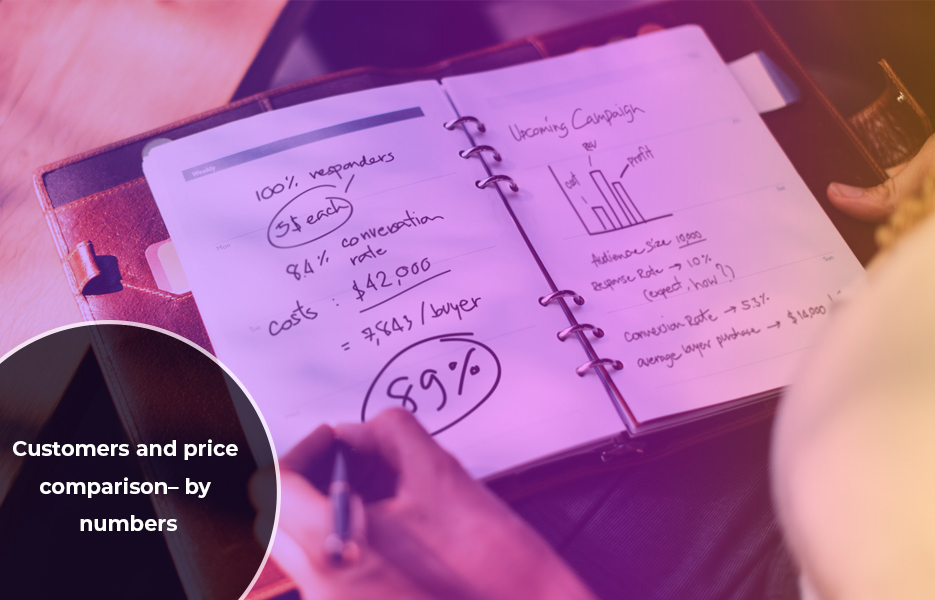
- 81% of shoppers research their purchase online before buying from a website
- 80% of customers who buy in-store do price comparison online before purchasing
- Customers visit an average of three websites before deciding on their purchase
- 70% of online shoppers use Amazon to compare prices
- 87% of customers use reviews before making a purchase
- 55% of online shoppers say that free shipping is the most important option
- 22% of online shoppers abandon carts if there are unexpected costs during checkout
Which are the best price comparison websites?
General price comparison
Google Shopping
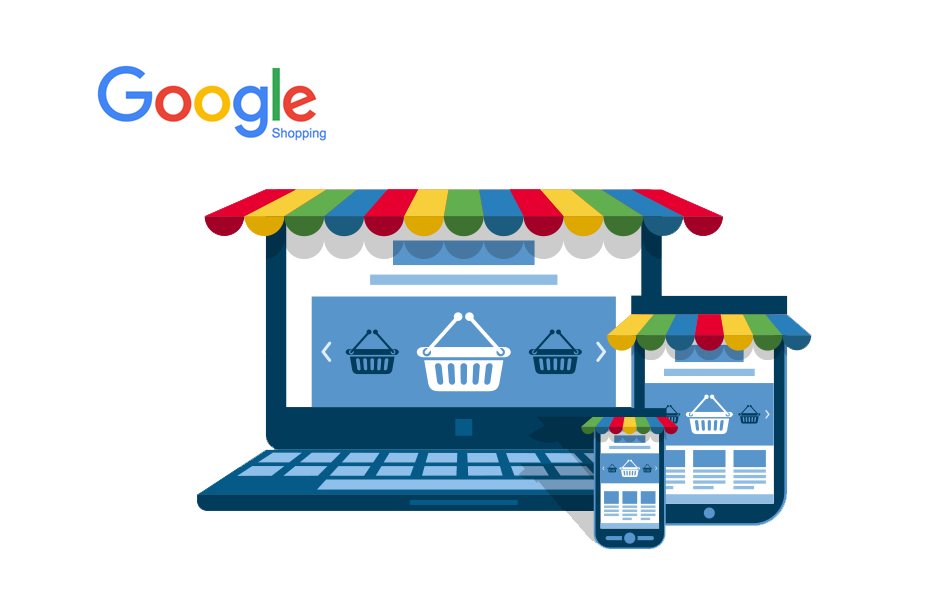
Google Shopping is probably the most widely used comparison website. It’s the one that Martin Lewis of Money Saving Expert recommends – and many of us take his word! He also recommends checking other sites before buying, notably Kelkoo, Price runner and Price Spy. It’s a safe assumption however that most of us head for Google when we start researching a purchase. With Google Shopping ads in search results, it’s easy to find great prices. Not only do you see products, with their prices, Google also give us Comparison Sites.
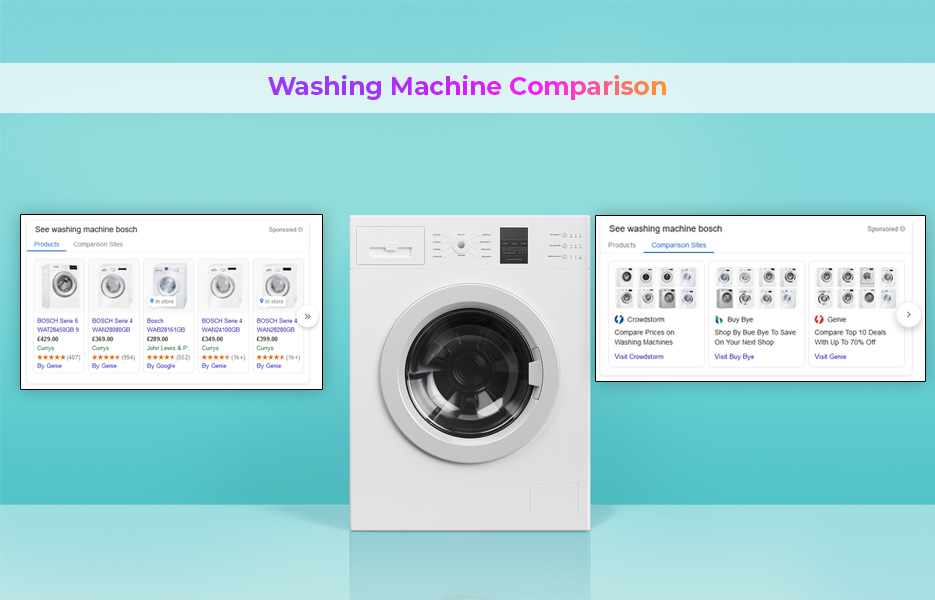
On our search for washing machines, we get options to visit Crowdstorm, Buy Bye, Genie, RedBrain and Priclist.com.
Different searches give us different Comparison Sites too. When we search ‘yellow dress woman’, we get Lyst, Buy Bye, Kelkoo and Café La Moda. If we search ‘airbed’, we get Shopzilla, LowPriceShopper, SalesStocker.com, Buy Bye, Crowdstore, RedBrain and Priclist.com. This means if you’re listing on other price comparison websites, shoppers may find your products even if they start at Google.
For sellers, Google Shopping is likely to be a wise investment, but there’s a lot to consider when setting up your campaigns. You’ll need to do research, as it’s not the same as text adverts. You’ll need to create a feed, and optimise it – this will include product data, images and price. So far, so good. Then you’ll see to bid successfully – which can be complex! You’ll need to continue to monitor and optimise your Google Shopping performance.It can be time-heavy, especially if you’re not an expert, which is why some sellers outsource Google Shopping to specialists.
Kelkoo
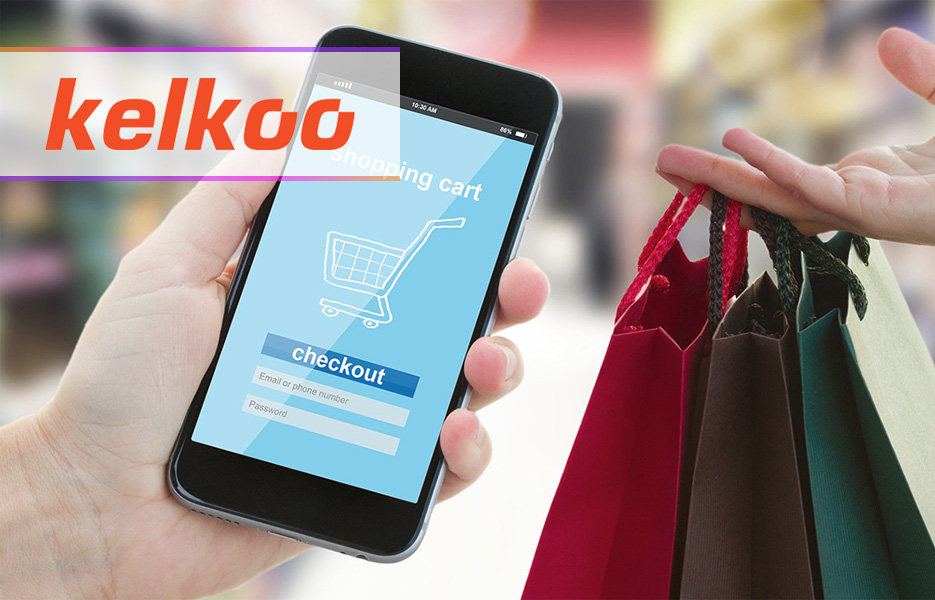
Kelkoo has been a price comparison website since launching in France in 1999. After changing hands several times (including being owned by Yahoo for 4 years!), it now operates in 22 countries.
Kelkoo isn’t just a price comparison website though. Their API web service allows other price comparison websites to use information from the Kelkoo database. For sellers, that means if they share information with Kelkoo, other price comparison sites might list their products as well.
In terms of what Kelkoo offer sellers – well, thousands of sellers worldwide trust them to help increase their sales. It works on a flexible cost-per-click basis, and it’s free to sign up. You only pay for the traffic you receive, and you can update at any time, so it’s a great model for new sellers. They’ve even got a tracking solution to help you make the most of your campaign analysis and better target your sales. They can even help you manage your Google Shopping!As the first Premium Google Comparison Shopping Service Partner, they know how to get the full potential from your budget.
PriceRunner
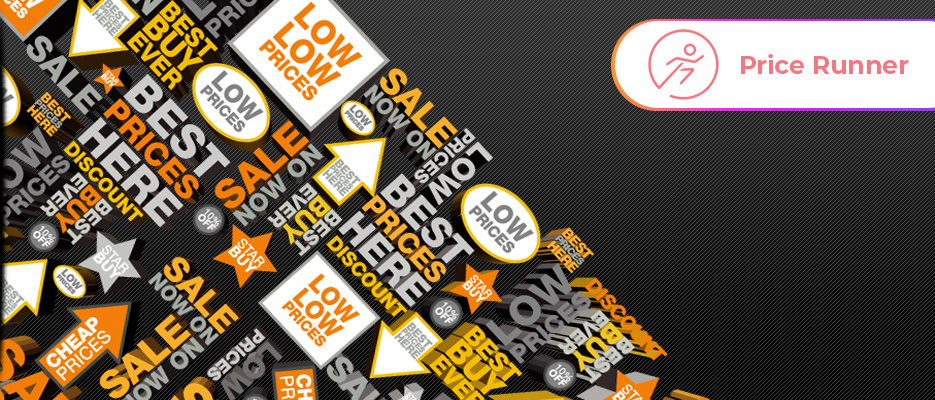
PriceRunner was launched in Sweden in 1999. They are one of the UK’s largest services for product and price comparison. Over 10 million visitors go to PriceRunner websites monthly, and their visitors ‘almost exclusively’ shop with sellers on PriceRunner websites.
Like Kelkoo, PriceRunner also runs on a pay-per-click model. Their price comparison works by offering both information collected from websites and from files provided by sellers. Most sellers send a file with current prices and products several times daily, so information is correct on PriceRunner websites.
They also have the facility for Verified Reviews to be displayed, which can help increase trust.
PriceGrabber

PriceGrabber is a basic price comparison website. It’s owned by Connexity (formerly Shopzilla) and we see huge potential for it. Now, it’s incredibly basic, but we see huge potential for it, if Connexity starts developing it alongside their other platforms. For sellers to join Connexity costs £300, which goes straight into your PPC account with them. With over 30 million shoppers on their network of comparison sites worldwide, it’s well worth considering Connexity and PriceGrabber.
Price Spy
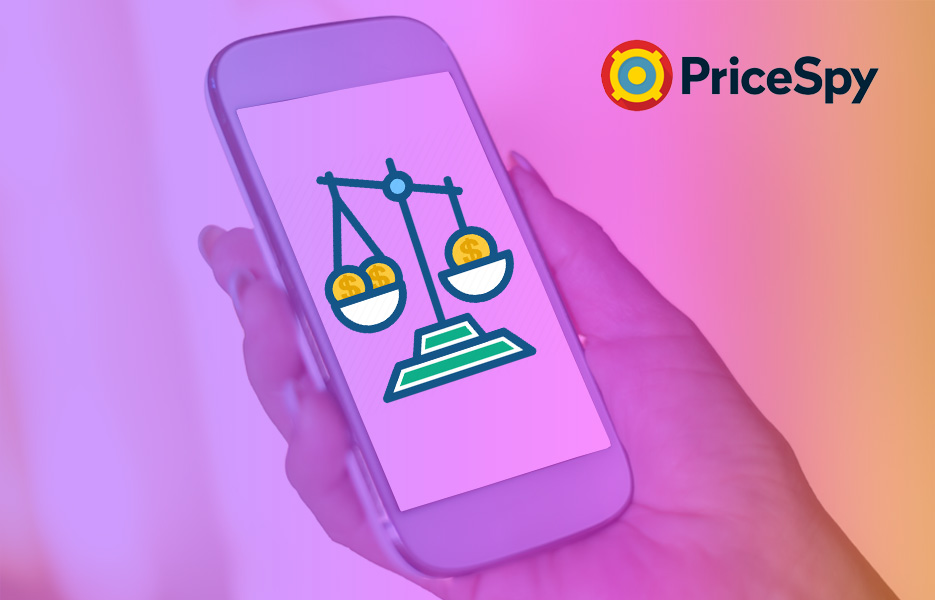
Price Spy claim to be an impartial price comparison website. Products are grouped into categories, just like a regular online store.
Sellers can improve their visibility once they are registered with PriceSpy by becoming a featured shop. This gives extra marketing options, such as showing three competitive advantages in price lists and using the PriceSpy Analytics tool. PriceSpy also provide a ‘Cheapest on PriceSpy symbol for your shop when you are the cheapest. You can update your prices by uploading your price file. Should you find the performance not to the standard you hoped, they have a one-day notice period.
By Buy Bye

Buy Bye is an intermediary host advertiser. Their website is pretty minimal, though tells us where they operate. With plenty of options for filtering, it’s pretty easy to find what you need. The site doesn’t check the retailers, so customers may need to do further checks on the retailer before making a purchase.
Idealo

Idealo gets over 15 million visitors each month. Customerscan find and compare prices on a wide range of categories and flights. They have over 10 millions monthly users across the UK and Europe, with over 180 million products from 30,000 shops.
For sellers, the good news is that rankings are not for sale – so even the smallest seller can get the top spot! You only pay if a customer goes to your store from the Idealo website. You pay per click, but those customers are ready to buy, so you get a good return on your investment. Idealo say they have a ‘very high user conversion rate’. They also help businesses sell internationally. They say businesses can sell up to 42% more orders by selling in Germany, by using Idealo. Find out more here.
Fashion price comparison
Lyst

Lyst is a global fashion search and eCommerce website. They claim over 70 million people access over 4 million fashion products on their website. For customers who are looking for a specific item, it’s got great filtering options. Customers complete their purchase by going to the retailer’s website. Becoming a Lyst partner is upon request.
ShopStyle

Much like Lyst, Shopstyle compares fashion items. Some of our team members have used ShopStyle for years! It’s been around since 2007, and drives over $1 billion in sales. Retailers can partner with ShopStyle, but you need to be an established brand with your own unique website URL. Amazon and eBay only sellers won’t be considered.
Wine price comparison
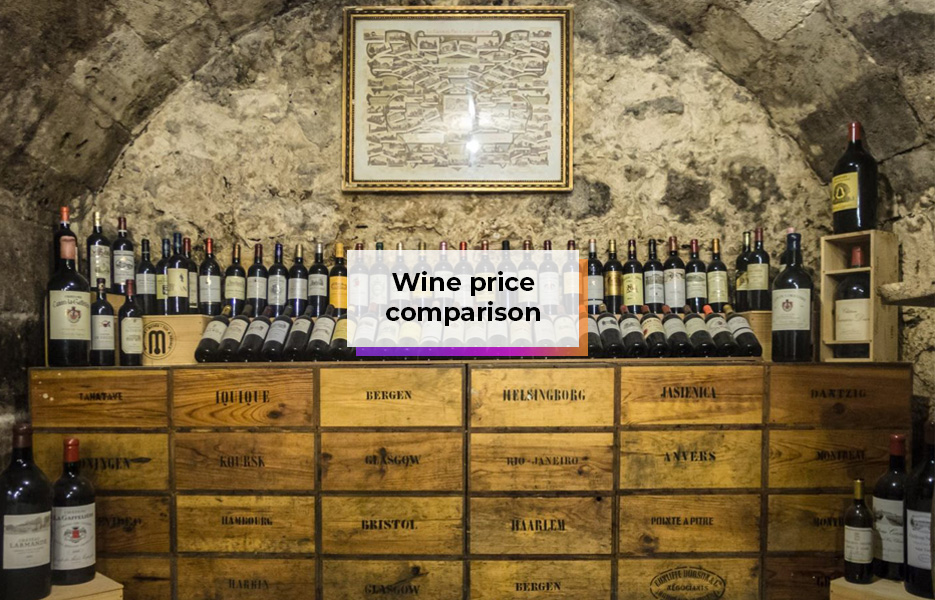
Wine-Searcher
For those who don’t know much about wine, choosing a good one can be a daunting experience. Wine Searcher makes it easy – you can search for a particular brand, or by the type of grape. They also provide advice and guidance, with a wine encyclopaedia, and are undoubtedly an expert in their field. Want your wine cellar valued? They can do that too.
Bring a Bottle
Bring a Bottle is an independent price comparison website for alcohol. Find the brand you’re looking for, and see current pricing information. You can also visit the store directly from Bring a Bottle to make your purchase. It’s possible to keep a favourite list, and set price alerts. Top brands compared include Calvin Klein, DKNY, Hugo Boss and Prada.
Perfume price comparison

Fragrances compared
Fragrances Compared does exactly what it says on the tin – compares prices of fragrances! Simply find the scent you want to buy, and the website finds offerings from different retailers, including Superdrug. You can search by price, or price per millilitre, which is a great way to know if you’re getting the best value for money.
Cheap perfume expert
Cheap Perfume Expert might not be the most glamorous name to find your scent, but it really does perform! The comparison finds fragrances from Charlie to Chanel, automatically filtering returns by price low to high. The only gripe we have is that you don’t know which retailer’s website holds the best price until you get there.
Grocery shopping comparison
mySupermarket

mySupermarket was set up with the aim of making the weekly shop cheaper. Customers can build their shopping list, find out which supermarket is cheapest this week, and buy from there.They claim that shoppers save an average of 30% on each shop. They have 14 different supermarkets to choose from, from the ‘big four’, to discounted stores Aldi and Lidl, as well as Amazon, Boots and Superdrug. Major retailers can advertise on mySupermarket – even if you’re not selling groceries! You can sponsor categories and pages, target specific audiences or sponsor mySupermarket emails. With around 200,000 households using mySupermarket on their regular shop, that’s a lot of potential viewers of your advertising.
Flight comparison websites

Skyscanner
Skyscanner allows customers to find flight, hotel and car hire options. Their app has been downloaded over 70 million times, and they have over 80,000 customers every month. Customers are not charged commission, but partners pay a PPC charge. Other partners advertise on the Skyscanner website and app.
Kayak
The Kayak website compares flights, hotels and car hire, as well as package holidays. They process a whopping 2 billion searches each year. Kayak has contractual partnerships with over 700 sites that feature in their results, but affiliates and hotel owners can join Kayak.
Price Comparison Apps

PriceSpy
The PriceSpy app works in all the markets that the website does – so, Sweden, Norway, Finland, Great Britain, Ireland, New Zealand, France and Italy. Downloaded over a million times, it ranks 4.3 on the Google Play Store and 4.2 on the Apple App Store. The PriceSpy app allows users to do all the price comparison they do on the website, and make lists. The app can also scan barcodes to compare prices in-store – so there’s no need to Google the product. They update the app regularly, and feedback on reviews for the app comment how updates have improved it.
Idealo
The Idealo app is similar to the PriceSpy app, allowing for searches using barcode scanning. Reviews comment on the ease of use, and that you can search flights as well. Customers also like the price tracking facility and push notifications.
mySupermarket
The mySupermarket app allows shoppers to build shopping lists, set up price alerts and find out which supermarket is cheapest. Users of the app can also use their phone to scan products and get real-time prices.
The psychology of pricing
If you’re a business owner and selling online, you’ll always be looking for ways to increase your sales. It’s what you love to do! However, many sellers start out without any background knowledge – it’s partly why we made Avasam so easy to use. We wanted to make it as easy as possible for literally ANYONE to start out in the business of selling.
Because we know selling, and psychology, here’s a few studies you might find useful.
Use comparative pricing carefully
OK, so we know we’re looking at price comparison in this blog post. And it CAN be incredibly lucrative, when used in the right way. Comparison websites can certainly direct traffic to your website, and you should consider them as part of a wider plan. But simply undercutting similar products doesn’t always work.
A famous study from Stanford University showed that price comparison may not work exactly as marketers think. Taking the example of branded and generic aspirin pricing, they showed that customers may not choose the cheapest item. In fact, in many cases, they might opt to buy nothing!
When customers are invited by advertisers to compare products (explicit comparison), they are much more risk averse. That means if sellers tell them to compare their price with another product, they may not automatically choose the cheapest.
What is more effective here is the implicit comparisons that are made. This is where customers take the initiative to compare items themselves. Sellers can make use of implicit comparison using clever listing. Place similar items together, or build comparison functionality into your website. This allows customers to take the initiative and choose to compare items they’re interested in. They’re in control of the comparison – it’s less obvious that you’re nudging them towards a specific choice.
Apply this to your business:
- Carefully curate your website to encourage implicit comparison
- Emphasise unique product features
- Highlight the amount of time saved by the product, rather than money
Sell time, rather than money
You might have heard of the slogan ‘It’s Miller Time’. The advertising executives at The Miller Brewing Company knew what they were doing with this one! In today’s busy world, ‘selling time’ rather than saving money can be an effective strategy. Jennifer Aaker claims
“Because a person’s experience with a product tends to foster feelings of personal connection with it, referring to time typically leads to more favourable attitudes—and to more purchases.”
Her research showed that the happiness-time connection can be much more effective than marketing lower costs. Her research showed that when using marketing to stress time benefits was significantly more effective, because time is a resource that is irreplaceable. They found that advertising that stressed time attracted twice as many people, who were willing to pay twice as much.

The only exception to this was for prestige products – luxury sports cars, designer clothing or jewellery. Prestige purchases feel that “consumers feel that possessing the products reflect important aspects of themselves… more satisfaction from merely owing the product rather than spending time with it.”
Apply this to your business:
- Highlight time saved by the product
- Show how the product enhances the customer’s life
Pricing points can be used for effect
Dan Airely of Duke University found that where retailers put a ‘pointless’ price, customers become ‘value seekers’ rather than ‘bargain hunters’. Here’s an example:
- A web-only subscription for £59
- A print-only subscription for £125
- A web + print subscription for £125
The middle price seems a bit useless – why wouldn’t you choose option 3, and get the print + web package? However, it’s prompting customers to think about their purchase. Rather than thinking just about the price, they’re thinking about the amount of value they’re getting.
If you take away option 2 though, customers start to convince themselves they don’t really need the upgrade. They’re bargain hunters again, rather than value seekers.
Apply this to your business:
- Use pricing incentives like bundles to increase sales
- Consider the use of ‘useless’ pricing to increase implicit comparison
The all-powerful number 9
How often do you actually see prices that end in zero – in supermarkets, online, or on the high street? It’s rare, isn’t it? Most stores will use prices that end in 9, to make the price appear lower than it is. £100 or £99.99? It’s almost exactly the same, but customers prefer £99.99. Why? Well, ‘charm prices’ almost always see more sales. By up to 24% compared with rounded price points.
A study by a team at MIT and the University of Chicago tested this. They tested selling a standard item of women’s clothing at three price points: $34, $39, and $44. What they found was really interesting. You might have expected that more items were sold at the lowest price point. But the item actually sold most at $39!
However, there is another way to increase sales, particularly if you’re discounting items. If sale prices stress the original price, they can sell more, at any price.
So, a ticket on an item might be displayed like this:
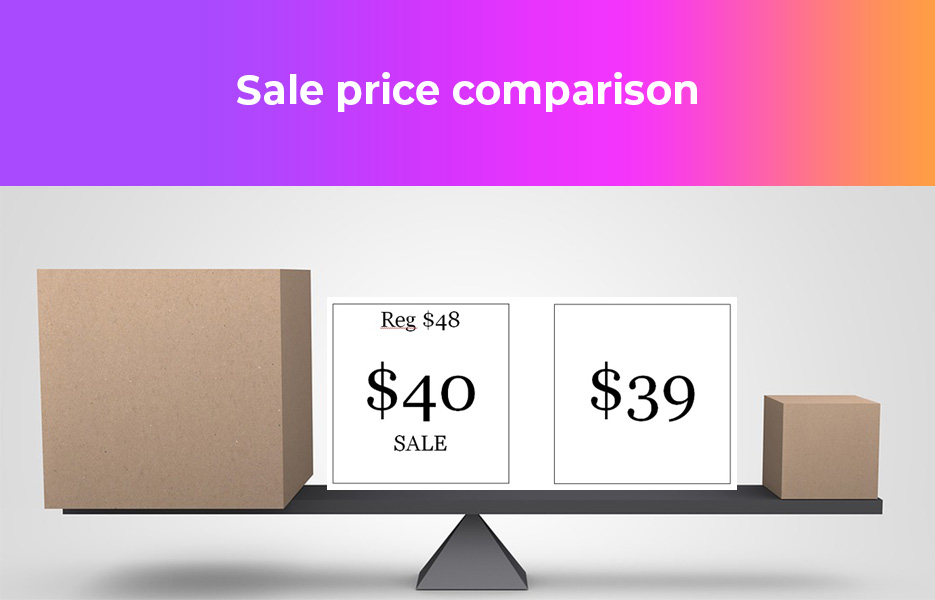
The item showing the amount of discount (on the left) will make more sales. You can make this even more powerful though by showing the original price with the number 9. So, we might show the regular price of $48 on the ticket, but also set the sale price to $39 rather than $40.
Apply this to your business:
- Use prices that end in 9 – it can make more sales than even lower prices
- Detail the original price when discounting
- For the most sales, combine the number 9 with your sales pricing
Price context matters
It’s widely recognised that pricing can be influenced by the location it is bought from. Richard Thaler’s experiment asked people how much they would pay for a beer to be drunk on the beach. The same beer, drunk at the same place on the beach, just bought from different locations.

- A local, run-down grocery store nearby
- A posh hotel nearby
Remember – the same beer, the same place of enjoying it.
The experiment found that people were prepared to pay more. Not just a bit more either – up to 77% more when the beer was bought from the posh hotel. But if the beer is the same, and the outcome is the same, why might this be? It’s the power of framing. Small elements can make a huge difference.
Let’s say we’re selling fudge. Here’s a few ways we can embellish the language to frame it better:
- Start generic : Shortbread
- Add a geographical element : Scottish Shortbread
- Add a description : Buttery Scottish Shortbread
- Add quality and nostalgic elements : Grandma’s Best Buttery Scottish Shortbread
When you add this to a narrative in your listing, here’s where the power comes in.
Grandma’s Best Buttery Scottish Shortbread is made with grass fed butter made from our herd of Ayrshire dairy cattle. We add the highest quality golden caster sugar and hand-ground flour, and combine in the same method our family has for generations. When it’s perfectly baked, we top with more organic sugar for that perfect crunch and crumble.
Now, which would you choose? ‘Shortbread’ or ‘Grandma’s Best Buttery Scottish Shortbread’? Time for a cup of tea and a biscuit, we think!

There’s also a case study by Cialdini that found a local jeweller who made a mistake with pricing. The turquoise jewellery should have been reduced, as it had previously been ignored by buyers. However, a mistake meant it was priced at twice the original price, rather than half. The over-inflated price spoke to their customers and the jewellery completely sold out! Nothing had changed apart from the price.
Sellers can also make the most of selling for more by ‘anchoring’ a price next to, or near a much higher price. Consider a branded watch.
RRP might be £100. Inflate the price to £120, and locate the listing on your home page next to a £500 or £1000 watch. The over-priced watch suddenly becomes attractive to the customer. Especially if you combine this with your fantastic description, which will emphasise the value it brings to the customer.
Apply this to your business:
- Make your website appear as a premium brand
- Frame your listings well, and write descriptively
- Try selling items for more than your competitors
- Locate over-priced listings near more expensive items to encourage implicit comparison
How price comparison websites can help sellers
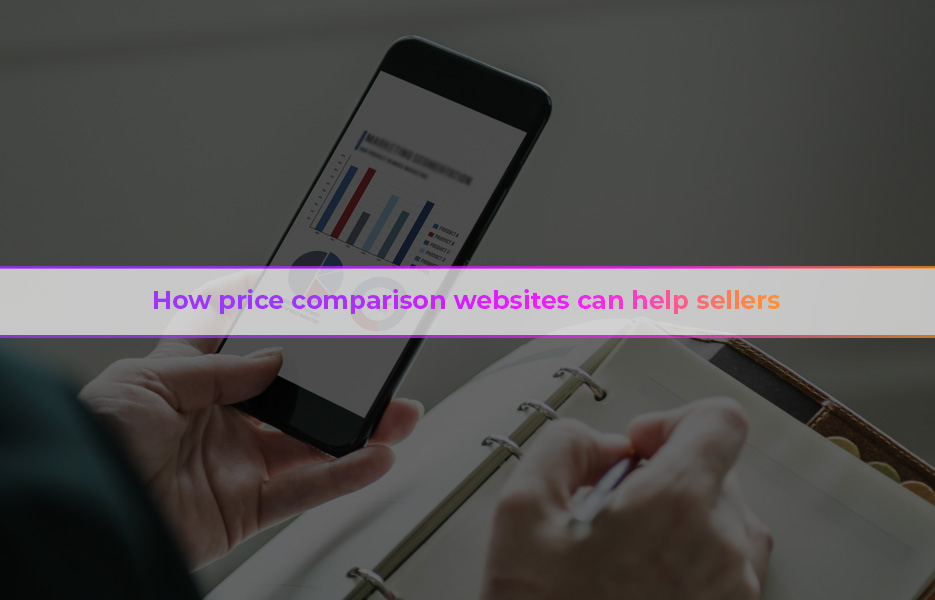
Price comparison websites are a great way to reach more customers and increase visitors to your online store. In addition to helping you make more sales, there are other advantages to getting your products on price comparison websites:
They help you make the most of your advertising budget.
Price comparison websites are just another way you can get your products in front of customers. All Business claim that 63% of customers using comparison websites are very likely to make a purchase. Not only that, they actually spend around 25% more than other online customers! That might seem counter-intuitive, when they’re searching for the best prices. But, when they’ve found a bargain, they’re more likely to add extras to their basket – increasing their overall spend.
If you’re not seeing the returns you’d like on your pay-per-click (PPC) budget, look to price comparison websites. They’re often lower cost, and can help increase your sales, as customers who click your link actually want your product.
They can help increase your Google ranking.
Listing products on popular price comparison websites can increase your visibility on search engines. This means that when someone searches for your products, they’re more likely to see your products – thereby increasing potential sales!
They help you know your competition.
Knowledge is power! You can gather useful information about your competitors from price comparison websites. We’re not just talking about pricing information either. You’ll be able to spot when they’re offering different products or services, or running promotions that you might want to compete with.
Increase customer reviews.
Most price comparison websites feature reviews and feedback. If you’re getting great feedback from customers, this feature is going to help increase potential sales, but that’s not all. Customers who purchase as a result of finding your product on a price comparison website will also leave feedback. So, as you’re providing great products and great service, the circle completes with their feedback. Then more customers find you on price comparison websites, read reviews, and so the cycle continues!
You can compare levels of service.
Customer service is so important if you want to stand out from the crowd. When you’re finding out about your competition, check their service feedback. How can you outdo them? Negative feedback might’ve only been a tiny complaint, but if you can avoid that, their customers might soon be yours! Make it easy for potential customers to ask questions, be transparent about shipping costs, and so on.
Find your next product.
When you’re checking out your competitors and their prices, you might find gaps in the market. This might be for a new product, or it might be a new way of marketing a product. eCommerce never stands still, and neither should your business.
Use them for test shoppers.
You might think you’ve got absolutely everything right. Using friends or colleagues as test shoppers can provide you with valuable feedback, and it’s a good idea. You might not notice a tiny spelling error or a flaw in the checkout process on your website, especially if you built it. Make sure your test shopper tries accessing your products from whichever price comparison website you’re on while they’re at it. Is the process smooth? Do the links work correctly? Are your landing pages and checkout process as easy as possible?
Things to remember about price comparison websites
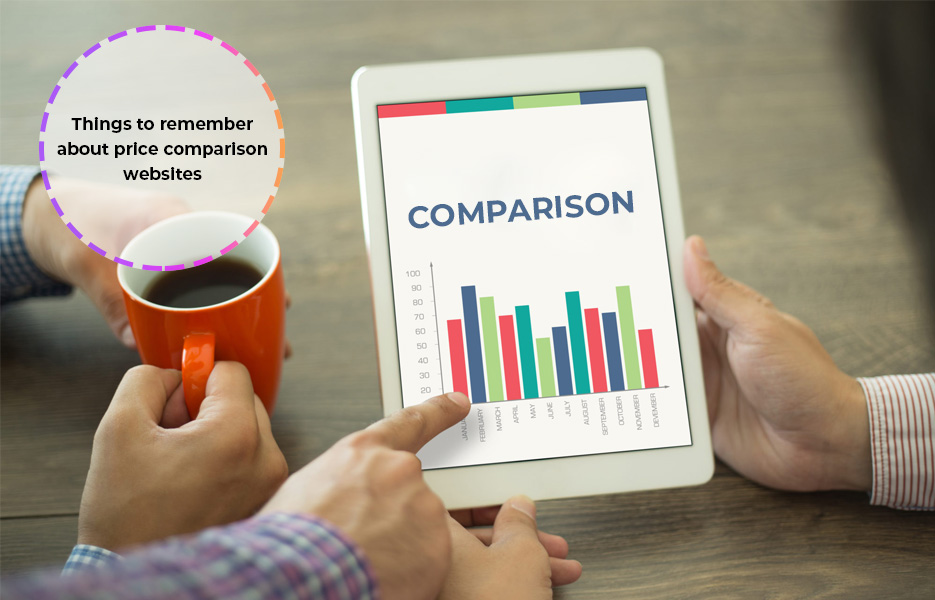
If you can’t seem to rank on Google, or can’t secure the Buy Box on Amazon, look to comparison sites. People who are using comparison sites want the best deals, and so may be more inclined to choose your products. Some comparison websites allow you to upgrade to a featured listing, so your products are listed first. This can help you increase your potential sales.
However, be careful. Price comparison websites are only going to be useful for you if your products are comparatively priced. If prices or shipping are too high, you still won’t make sales through comparison sites – people want the lowest prices! But if you’re using them wisely, you can use them to gather information about your competitors and keep on top of prices.
Before you start using a comparison website, check their terms and conditions. You don’t want to get stuck paying for a service that doesn’t suit, or isn’t performing well for your business. If a comparison website doesn’t return the kind of results you want, consider switching to another.
The majority of price comparison websites are going to charge sellers a set fee, or bid, per click. Others may charge a pay-per-action model. This iswhere sellers pay a percentage of the value of sales made from comparison websitecustomers. There isn’t a one-size-fits-all approach to price comparison websites, so be sure you’re using the right model for you.
Price comparison websites can be great for increasing sales. However, it’s important not to get complacent, even if you get good results initially. Make sure you’re monitoring your campaigns, and tweak them appropriately when necessary. If you’re getting good results in one area, but not another, assess where you’re directing your budget.
In most cases, you’ll need to upload your product list and current prices. If a manual process is required daily, make sure that you have enough resources to complete this. You don’t want to miss out on sales because you updated prices yesterday – but so did your competitor!
How does price comparison fit in with your Avasam business?
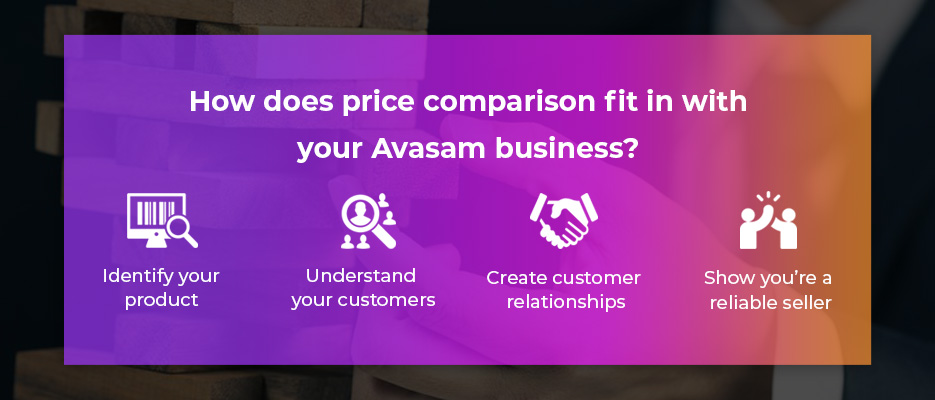
Price comparison websites aren’t likely to be one of the first things to consider when you start out. There are so many other things to consider first! Here’s a quick run-down of some actions to take when you’re starting out:
1 Identify your product
Once you’ve found the product you want to market, research absolutely everything about it. Can it be used in different ways? Who does it suit? Can it be used to ‘hack’ doing something it isn’t really designed for? What colours does it come in? Try and think of absolutely everything.
2 Understand your customers
As with your product, try and learn everything about your target customers. Realistically, although you might think your product is suitable for everyone, it probably isn’t. So, create target customer profiles, so you can market your product to them specifically. Try and establish as much about them as possible. Where do they do their weekly food shop? What sort of car do they drive? Where do they go on holiday? Give your target customers names, and use stock photos to help you remember them.
3 Create customer relationships
Outside of providing fantastic customer support, this is where your social media comes in. You’ll need to create social media feeds that are appropriate to your target customer. By understanding your target market, you can ensure your feeds are relevant.For example, don’t waste time with Snapchat marketing if your target customer is in their late 50’s. Customers in that bracket are much more likely to use Facebook, so invest your time (and marketing budget) wisely.
4 Show you’re a reliable seller
Make sure potential customers know you’re a reliable seller. Enable reviews on your website, sign up for review websites like Trustpilot and so on. Answer comments on your social media, even if it’s just a Like. If you get a bad review, invite the customer to make contact. This reassures potential customers that you’re trustworthy and want to help if they have an issue. You can also prove that you’re knowledgeable by posting regularly on your blog, or creating short YouTube videos. Spotlight different products, compare them, or talk about problems people have that your products resolve.
There’s a lot to consider here, but don’t feel you have to implement it all, in one go. Use what we’ve discussed to help finely tune your business, whichever stage you’re at. Applying small changes can help you figure out what really helps maximise your sales. Each business is different, so apply the most achievable changes first, and adapt from there. There’s nothing to say you must use price comparison websites either –they might simply not work for your business. Find what works, and then try new things to maximise your sales, and your profits.

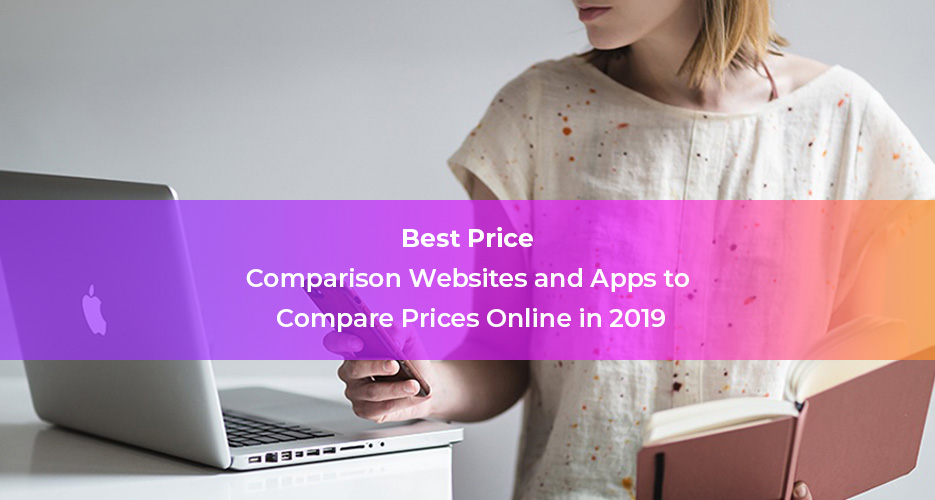






DropShip products from verified suppliers to diversify your inventory and scale your eCommerce business
Hi Dawn,
I really like it how you talked about price comparison websites in depth. You answered all the questions, anyone would ask about this topic. What can I say! What an awesome article. It really deserve to be on page 1 in Google.
I thought you’ll be interested in improving that list by adding one more website: Pondeals.com
Pondeals is a price comparison website created with a goal to make people’s life easier when shopping online. It can get prices from over 20 websites including Amazon, Ebay, Walmart, and more. So shoppers can compare prices and deals to buy from the cheapest seller.
It will be a valuable addition to your article.
Anyhow, keep rocking it Dawn, your articles about Ecommerce and Business are Amazing!
Thanks,
Amine.
pondeals.com
I like it when you said “63% of customers using comparison websites are very likely to make a purchase”, it’s true, price comparison websites are changing the way we shop online. I believe it’s the future of online shopping as it’s helping a lot of people saving money online.